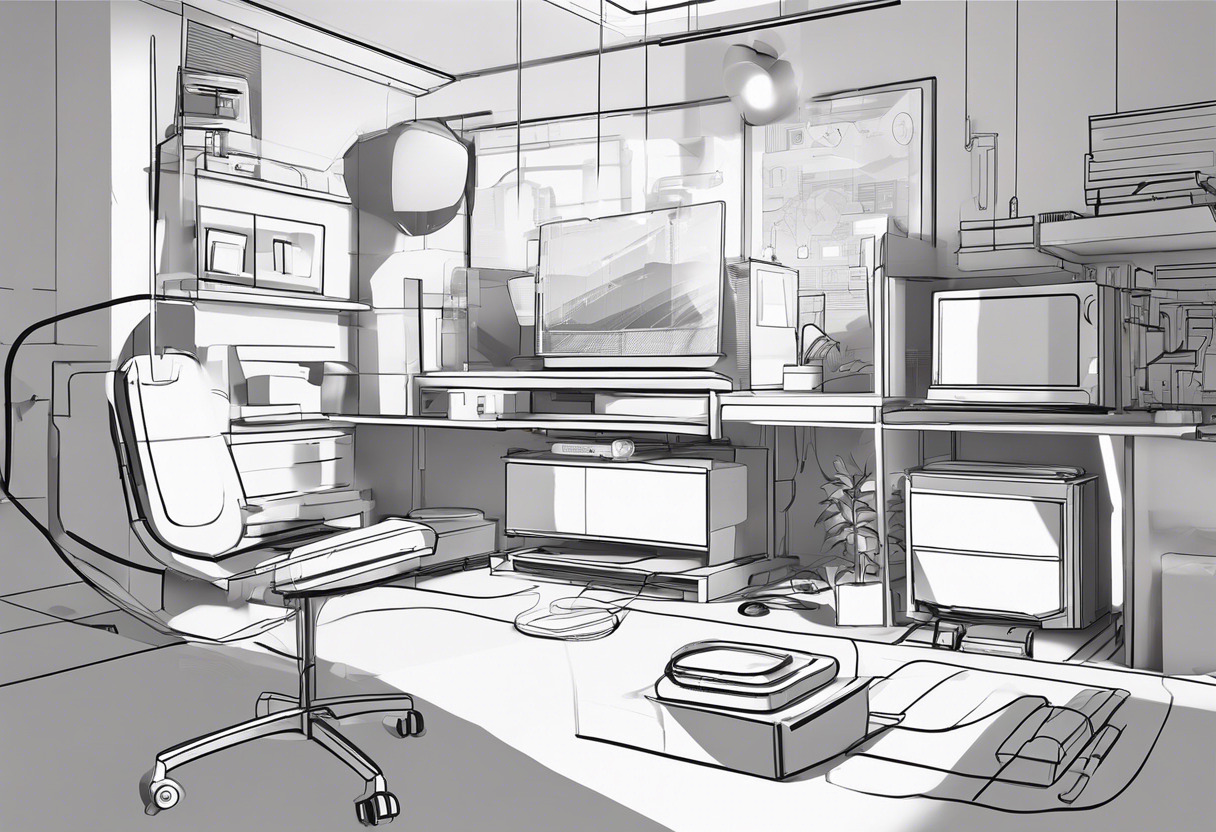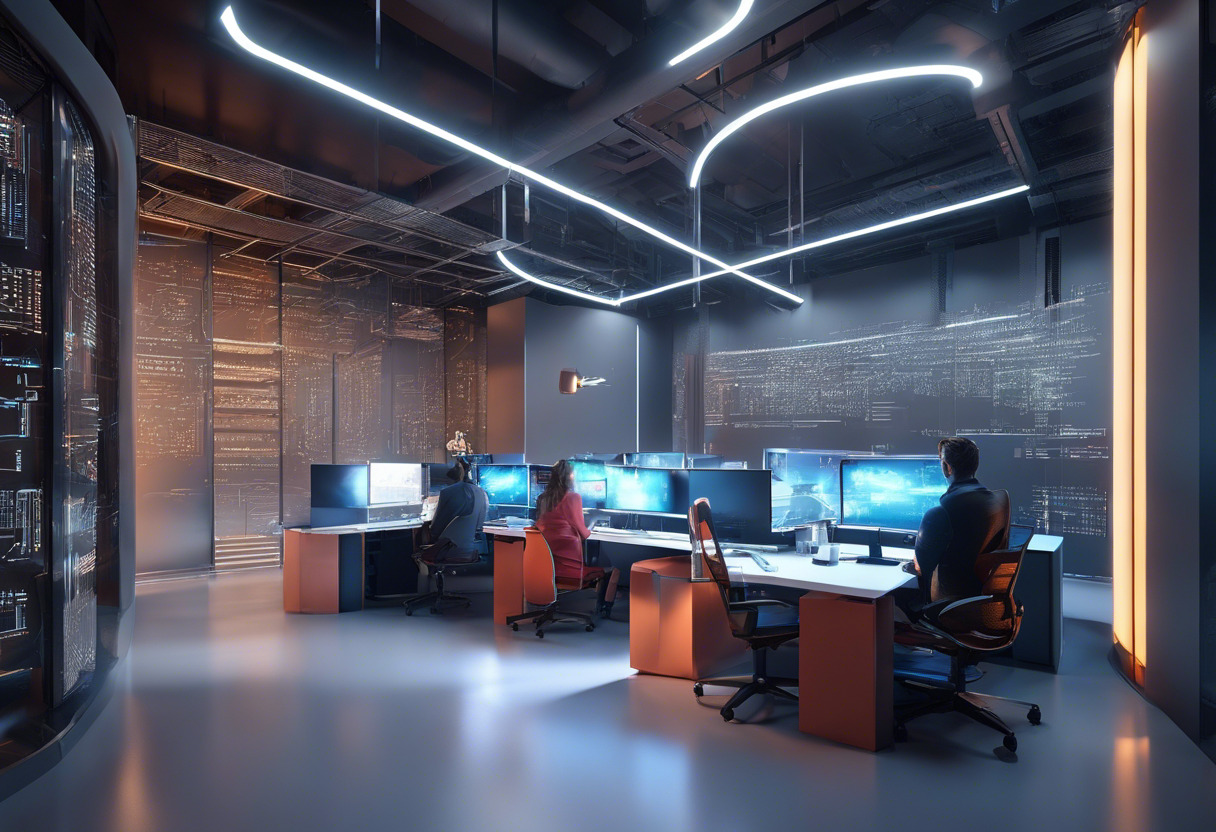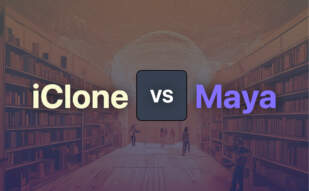If you’re just starting out in 3D graphics or on a tight budget, Blender is a competitive choice due to its comprehensive tool set and being free/open-source. However, for a more intricate and professional-grade project, Maya strikes a powerful punch with its unparalleled features and customizable user interface.

Key Differences Between Maya and Blender
- Coding: Maya uses Maya Embedded Language (MEL); Blender is coded in C, C++, and Python.
- Price: Maya offers subscriptions with varying pricing; Blender is free and open-source.
- Development: Maya is owned by Autodesk, and is used widely in professional industries; Blender is community-developed with a more informal support framework.
- User Interface: Maya is known for a highly customizable UI; Blender, while robust, has a less flexible UI.
| Comparison | Maya | Blender |
|---|---|---|
| Type of Application | 3D Computer Graphics | 3D Computer Graphics |
| Initial Release | February 1998 | January 2, 1994 |
| Platforms Supported | Windows, macOS, Linux | Linux, macOS, Windows, BSD, Haiku |
| Application Use | Interactive 3D Applications, Animated Films, TV Series, Visual Effects | Animated Films, Visual Effects, Art, 3D-Printed Models, Motion Graphics, Interactive 3D Applications, Virtual Reality |
| Scripting Language | Initial: Tcl, Current: Maya Embedded Language (MEL) | C, C++, and Python |
| Pricing | Monthly/Yearly Subscriptions, Free Trial, Educational License | Free and Open-Source |
| Significant Users | Accenture, Dell, EYGBS India, Vavia Technologies | Community of developers, NeoGeo, NaN, Blender Institute |
What Is Maya and Who’s It For?
Maya, also known as Autodesk Maya, is a highly customizable 3D computer graphics application offering a suite of functionalities such as 2D drawing, 3D modeling, animation simulation and more. It comes from the stables of Autodesk and is available on Windows, macOS, and Linux platforms. Originally developed by Alias and now owned by Autodesk, Maya’s open architecture makes it a popular tool in the animation industry.
This versatile tool is for businesses that need to create assets for interactive 3D applications, animated films, TV series, and visual effects. Especially, those earning less than $100K can benefit from reduced fees. Some of the highly reputed users include Accenture, Dell, EYGBS India, and Vavia Technologies.

Pros of Maya
- Highly customizable user interface
- NURBS modeling system for complex shapes
- Powerful animation capability and simulation
- Ability to create detailed texturing, shading, lighting
- Supports importing assets to game engines
Cons of Maya
- May have steep learning curve for beginners
- Pricing might be high for small businesses
- Lacks a few advanced rendering features like global illumination, subsurface scattering
What Is Blender and Who’s It For?
Blender is a free and open-source 3D computer graphics software tool set developed by Dutch animation studio, NeoGeo. It offers a broad spectrum of features for 3D modeling, animation, rendering, and much more. Blender is known for its robust community development and widespread application across industries from art, 3D-printed models to virtual reality.
Blender is ideal for users needing tools for animated films, visual effects, art, 3D-printed models, motion graphics, interactive 3D applications, virtual reality and more. Given its free and open-source nature, it’s a top choice for both individuals and small businesses.

Pros of Blender
- Comprehensive suite of 3D graphics tools
- Open-source and free
- Strong community development
- Supports a wide variety of 3D file formats
Cons of Blender
- Complex user interface may be difficult for newcomers
- Toolset maybe overwhelming for simple projects
- Blender Game Engine has been depreciated
- Dependant on community development can result in discontinuation of certain features
Maya vs Blender: Pricing
Maya operates on a monthly or yearly subscription pricing model with a free trial and a discounted fee for businesses earning less than $100,000, while Blender is free and open source.
Maya
Autodesk Maya offers various pricing options based on monthly or yearly subscriptions. It also provides a free trial for beginners to get a feel of its vast capabilities. Maya cultivates the small business eco-system by offering a marked down fee for businesses that have a revenue of less than $100,000.
Blender
In stark contrast stands Blender, which is completely free and open-source. This means no upfront costs or recurring subscription fees. Whether you’re a freelance artist or a large animation studio, Blender offers its wide spectrum of powerful tools and features at absolutely no cost.
Maya or Blender: Which Triumphs for Your Tech Ambition?
In the sphere of 3D computer graphics, two titans reign supreme: Maya and Blender. They’re both powerhouses but which graphic gladiator should you rope into your tech team? Let’s decode this for different audience segments.
AR/VR Creators & Game Makers
For those crafting immersive worlds in AR/VR or building blockbuster games, Maya’s advanced animation, complex modelling capabilities, integrated renderer and the ability to import to game engines like Unreal Engine and Unity gives it an edge. Yet, with Blender’s versatility and open source nature, it remains a compelling option for indie game developers or smaller AR/VR studios.

Developers & Coders
As a developer or coder, the language of the tool plays a huge role. Maya uses MEL while Blender is written in C, C++, and Python. If you’re familiar with the latter, Blender can be a great ally in your creative journey. The tool is also free and open source, making it ideal for cost-sensitive coding wizards.

Film Industry Professionals & Animators
In the visual feast of film and animation industry, Maya stands unparalleled. It’s been used for blockbusters including The Lord of the Rings series and Star Wars. Yet, Blender’s fluid and smoke simulation, animation and sculpting tools can offer leap in visual creativity without blowing your budget.

When it boils down to Maya versus Blender, it’s a tough fight. Maya’s comprehensive functionality and performance win it favor among professional animators and game makers. Blender, on the other hand, attracts developers and independent creators with its open-source nature and Python backbone. Choose wisely, tech wizards!
Logan Bellbrook
Content writer @ Aircada with a knack for nature & AR/VR/XR. Blogging the intersection of tech & terrain.





